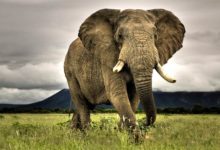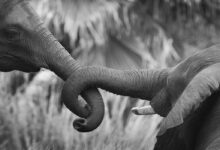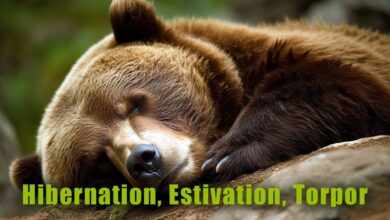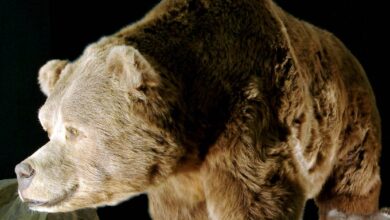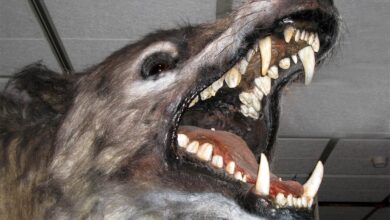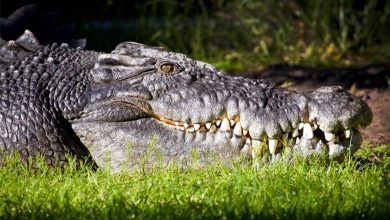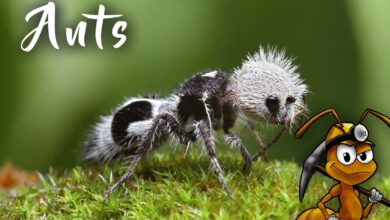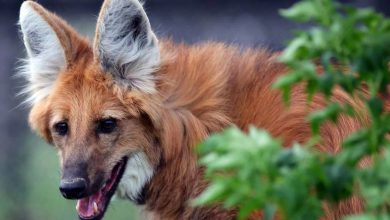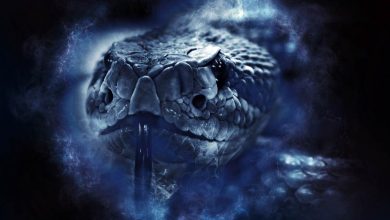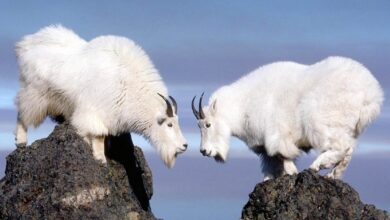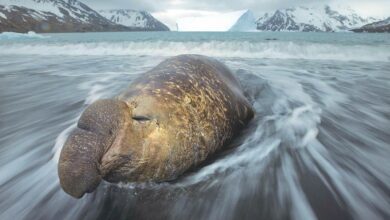Black rhinoceros, hook-lipped rhinoceros (Diceros bicornis)
It is hard to estimate exactly the number of subspecies of the black rhinoceros. However, it is known that at least three of them are classified as extinct in the wild. Every year the situation is getting sadder, because in the reserves is difficult to keep rhinos in good health and with life in general.
Classification
- Kingdom: Animalia
- Class: Mammalia
- Order: Perissodactyla
- Family: Rhinocerotidae
- Genus: Diceros
- Species: Diceros bicornis
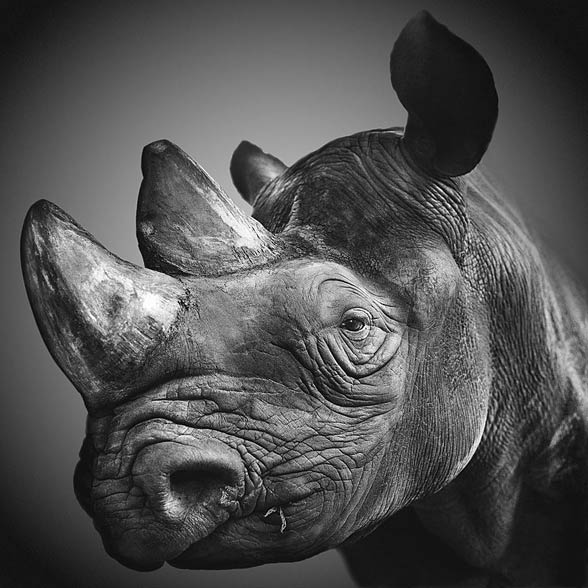
Subspecies and distribution:
The variability within species was considered by many scientists but it has not been solved eventually. It is commonly believed that there are 7-8 subspecies, three of which are critically endangered or extinct.
Southern black rhinoceros (Diceros bicornis bicornis) – extinct
In the past, it used to live on areas from the Cape of Good Hope via Transvaal (the province in the Republic of South Africa) to Southern Namibia. It was probably the biggest subspecies of the black rhinoceros but it became extinct in 1850 because of excessive hunting and destroying its habitat.
North-eastern black rhinoceros (Diceros bicornis brucii) – extinct
It existed in Southern Sudan, Eritrea, north and south-east Ethiopia, in Djibuti and northern and south-eastern Somalia. Last species disappeared at the beginning of XX century.
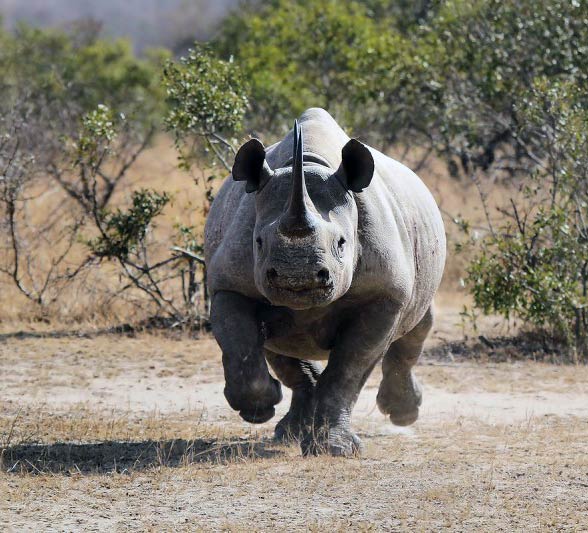
Western black rhinoceros (Diceros bicornis longipes) – extinct
It appeared 7-8 million years ago on Earth but during contemporary years, the number of its population started rapidly falling because of hunting for pleasure as well as hunting for its long horns which are considered the aphrodisiac and the cure in some cultures.
It lived in South Sudan, the northern part of Central Africa Republic, southern Chad, northern Cameroon, northeastern Nigeria and south-eastern Niger. The last wild animal was found in northern Cameroon.
The research in 2006, which was carried out to examine the probable range of distribution in Cameroon, was not successful in results because scientists stated that it was extinct in wild at that time. It was on 10th November 2011 that it was classified as an extinct subspecies.
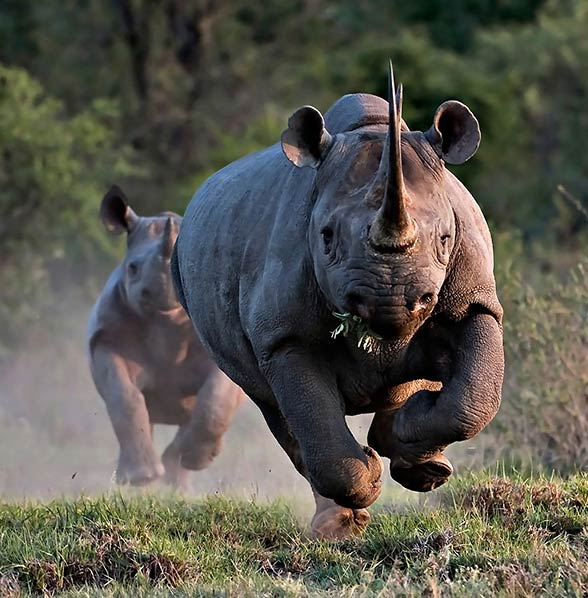
Chobe rhinoceros (Diceros bicornis chobiensis)
The range of distribution is restricted to the Cuando River (Chobe) in southeastern Angola, Namibia and northern Botswana. It is nearly extinct and there is probably only one specimen in Botswana.
Uganda black rhinoceros (Diceros bicornis ladoensis)
The previous area of distribution was southern Sudan, across Uganda, western Kenya and southwestern Ethiopia. It is considered extinct in most of the above-mentioned areas and it probably lives only in Kenyan reserves.
Eastern black rhinoceros (Diceros bicornis michaeli)
It primarily lived in South Sudan, Ethiopia, Kenya and north-central Tanzania. Today, its range is restricted to Tanzania.
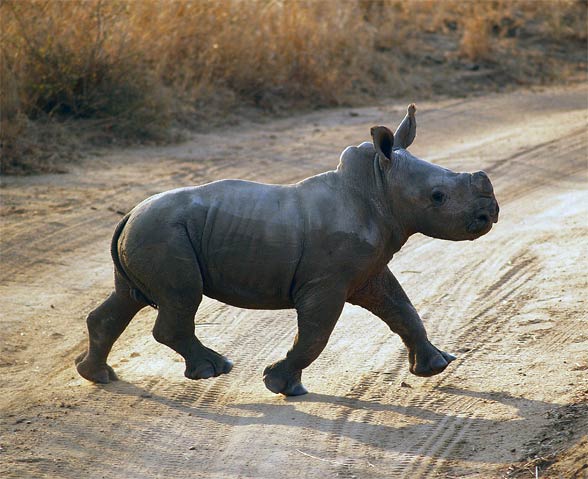
South-western black rhinoceros (Diceros bicornis occidentalis)
The small subspecies, which was adapted to live on deserts and semi-deserts. It primarily lived in north-eastern and southeastern Namibia and Angola. Today, it exists only in Namibian wildlife reserves and can be noticed in Angola intermittently.
South-central black rhinoceros (Diceros bicornis minor)
It is the most distributed subspecies which has quite compact body, rather big head and a lot of skin folds. It stayed in north-eastern South Africa (the province of the Republic of South Africa-KwaZulu-Natai) across north-eastern Tanzania into south-eastern Kenya. It appears mainly in reserves in countries mentioned previously. It is considered extinct in Angola, the southern part of the Democratic Republic of Congo and Mocambique. It was reintroduced in Malawi, Botswana and Zambia.
It chooses various areas for its habitat, from deserts through forested meadows, deciduous forests and savannah acacia scrubland.
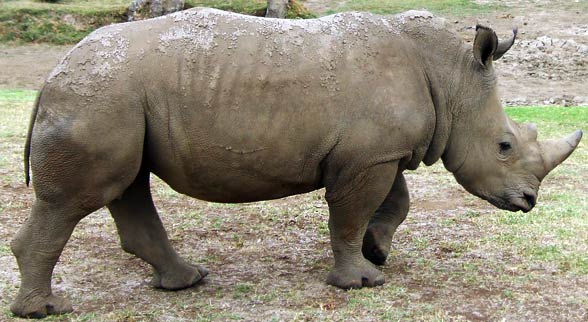
Characteristics
Appearance
It is smaller than the white rhinoceros for sure; height at shoulders is 132-180 cm (52-71 in), the length of its body is 2,8-3,8 m (1.1-1.5 in), the tail is around 60 cm (23.6 in), adult species weigh from 800 to 1,400 kg (1,760 to 3090 lb) but exceptionally big specimens can reach even 2,200-2,290 kg (4850-6390 lb).
Horns
There are two keratin horns on the foreface placed in ranks, the longer (front) horn is usually around 50 cm (20 in) and up to 150 cm (59 in). Horns are used for defense, intimidation, digging out roots and breaking branches while browsing food.
The foreface – differences between the white and the black rhinoceros
Contrary to the square-lipped white rhinoceros, the black rhinoceros has a narrow and prehensile upper-lip forming the ‘beak’ thanks to which it can grasp leaves and branches (the white rhinoceros eats grass; therefore, it must have square lips). Ears and the higher position of its head distinguish it from its ‘white’ cousin (the adaptable element making it easier to pluck leaves from trees and bushes).
The black rhinoceros is grey in fact, similarly to its thick-nosed (white) cousin.
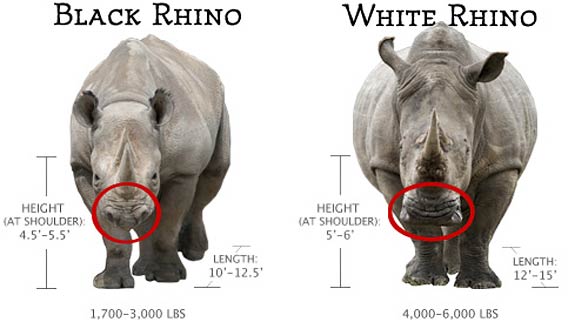
Diet
It prefers plants, especially leafy ones as well as rushes, branches, wood, spiky bushes and fruits. Its ideal feeding ground is thick vegetation in the area with bushy trees (scrubland, forests).
During the dry season, it can choose a few essential plant species (mainly leafy ones).
On its menu, there are 18 woody plants and 11 ones of other kinds. The food is selected on the basis of the quality not the quantity. Depending on the area of distribution, the oral cavity is adapted to different ways of crumbling food; some animals chew better, others cut the grains and some of them grind food better using the tongue.
During the dry season, it can stay up to 5 days without water although it likes wet areas – marshes, riverine woodland, wet grasslands. It chooses its habitat on the basis of the dominating vegetation and that is why it can live in many kinds of scrubland.
It browses for food in the morning and evening choosing specific plants but it can also taste the other ones if it has to eat its fill. It occupies the same ecological niche as the African elephant and therefore, it has to change its nutrition requirements from time to time. If elephants do not occupy a certain area, the food preferences go back to the previous form.

Lifestyle, behavior
It leads a solitary lifestyle and the only strong bow is between the mother and the child. While mating, it does not form permanent relationships-males copulate with many females and the other way round.
It is not strongly attached to one area and it crosses the borders of other rhinoceros ranges. The size of the food browsing area depends on the amount of food and water, the gender as well as the age of the rhinoceros.
The ranges of females, especially those having the young, are bigger than male ranges.
Every specimen has the area where it rests (i.e. ‘ the house’). During the hottest time of the day, it is almost not active – it rests, sleeps wallows in mud to feel cool, and protects itself against parasites.
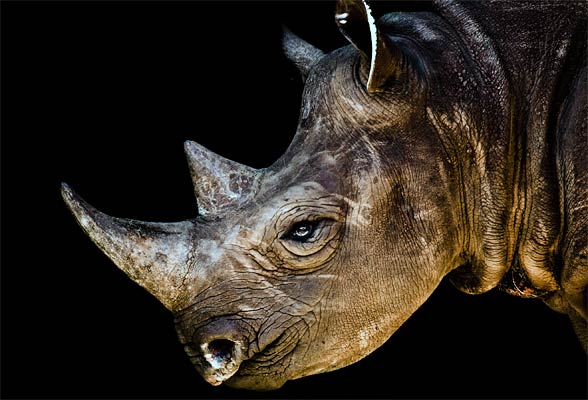
Aggressive animals
It gained the position of a very aggressive animal; it can slam into tree trunks and even the cast of termites.
Interspecies fights happen very often; during them, the rate of deaths among males is around 50% and among females – 30%. This death rate is the highest among all mammals.
It does not have enemies thanks to its size, thick skin and deadly horns. It is exceptionally killed by crocodiles. The young are scarcely attacked, but if it occurs, it is a lion or a hyena that does it in most cases.
The rhinoceros uses tracks beaten by elephants to get to overgrown ponds faster. Despite its weight, it is very fast and reaches the speed of up to 56 km/h (35 mph) moving on its toes.
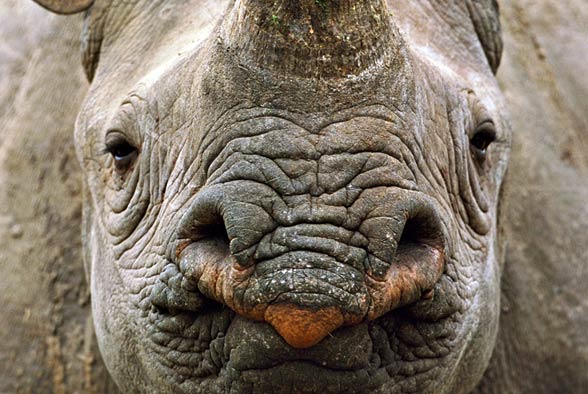
Scent communication
Because of its bad sight and the solitary nature, it has much more sensitive smell which is used to identify other species leaving the urine spraying on trees, bushes, around water holes and feeding areas. Females often mark certain places with their urine during breeding to entice the partner. The animal leaves feces in the same place as its urine forming the dung pile. The specimen can identify who to expect in the area by smelling the place and if it has understood the sign, it leaves its smell with feces and urine.
The rhinoceros reacts to the feces of the female and the male adult in different way than the ones of the subadult (on the basis of the feces, it can tell the gender and the age of its owner).
It rarely happens that they rub their horns and heads over the tree trunks (so as to leave the scent).
To compensate for the poor eyesight, the mammal has big ears moving independently of each other. A highly-developed sense of hearing lets it hear sounds from the long distance.
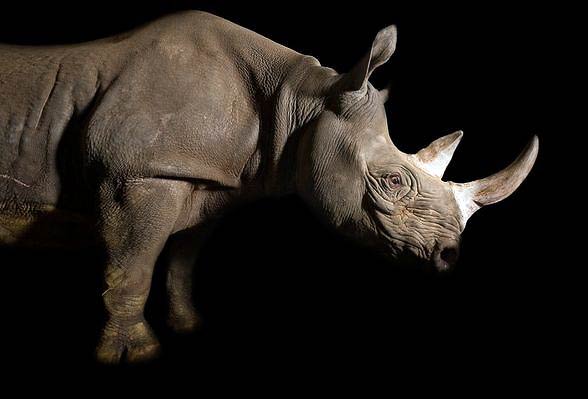
Reproduction
Adult rhinoceros become ‘friendly’ towards others only during the mating period. The reproduction is not set within a specific time period. Nevertheless, it is known that in very dry places, births are given during the rainy season.
When the male finds dung piles of the female, it follows it destroying the dung pile at the same time to make it more difficult for its rivals to find the female. Courtship behavior includes snorting and sparring with the horns between males. Additional mating behaviors are bluffing and blustering during which males snort and swing their heads dynamically before they try to make the intruder go away.
The couple stays with each other for 2-3 days, sometimes for weeks. They copulate a few times a day for half an hour. After mating, the female becomes pregnant and this period lasts 15-16 months. Then, one calf is born and it weighs 25-50 kilos (55-110 lb). After about three days, it does not go away from its mother. It will be bred with mother’s milk for 2 years and till the age of 3, it will stay with its female parent; that is the moment when the next calf is born. The young female can stay longer with its mum forming small female groups.
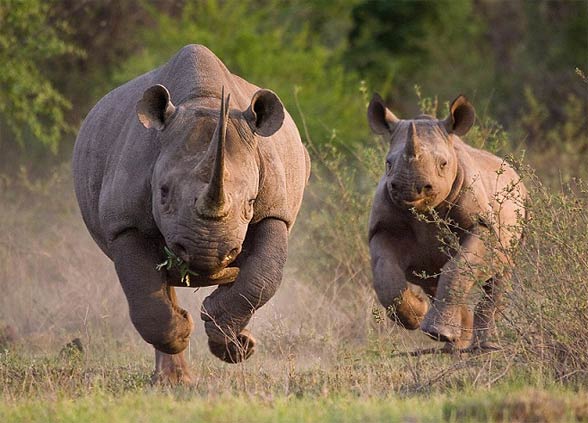
Maturity and lifetime
Males become sexually mature between 5 and 7 years old whereas males between 7 and 8 years old. It lives up to 35- 50 years in the natural habitat and without hunters’ interference.
Detailed information and size:
The black rhinoceros / hook-lipped rhinoceros (Diceros bicornis)
- Body length: 2.8-3.8 m (9.2-12.5 ft), females are smaller than males
- Height at shoulders: 132-180 cm (52-71 in)
- The length of the tail: around 60 cm (23.6 in)
- The length of the front horn: usually about 50 cm (20 in), max. 150 cm (4ft 11in)
- Weight: 800 – 1400 kg (1,760 to 3,090 lb), the record-holder weighed 2,200 – 2,900 kg (4,850-6,390lb)
- Lifetime: 35-50 years old in wild

The black rhinoceros – curiosities:
- The black rhino is the best-known species among the other five existing.
- The longest registered front horn was almost 150 cm (59 in).
- It happens sometimes that there is a third small horn on the foreface.
- The black rhinoceros is a difficult resident in captivity as it is hard to get convinced to eat food there. Other species are not such a big problem.
- On the basis of the chemical composition of the rhino’s horn, the preferred diet and the primary distribution can be estimated making it possible to protect the animal effectively and more punishments for hunters.
- Males in captivity sleep about two times longer than females.
- In zoos and reserves, the rhino is far more prone to diseases; therefore, the death rate is high.
- The prices of rhino’s horns go up on the black market and so the demand. There are offers to make this type of trade legal but the idea will not come into effect because it is easier to kill the animal than take care of its safety and deprive it only of its horn which would grow again. For buyers, it is not the animal, which is important but only a small part of it.
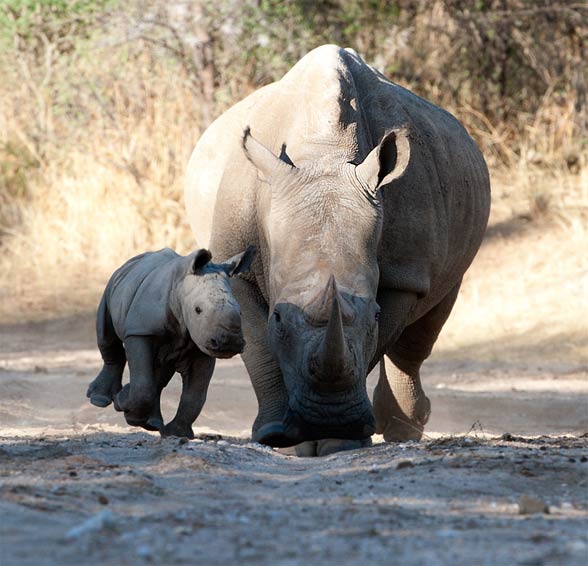
Recommended
- Rhinos
- Indian rhinoceros
- Javan rhinoceros
- Sumatran rhinoceros
- Woolly rhinoceros
- Arsinoitherium
- Elasmotherium
- Animals & dinosaurs records
- The fastest animals – Top 100
- The fastest birds – Top 10
- The heaviest dinosaurs – Top 10
- The longest dinosaurs. Sauropods Top 10
- The longest predatory dinosaurs. Theropods Top 10
- The heavies predatory dinosaurs Top 10
- The longest and largest ornithopods
- The longest and largest ceratopsians
- The shortest sauropods
- The smallest dinosaurs – Top 10




